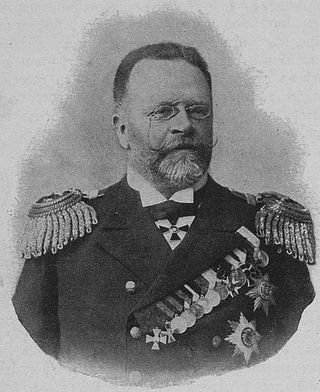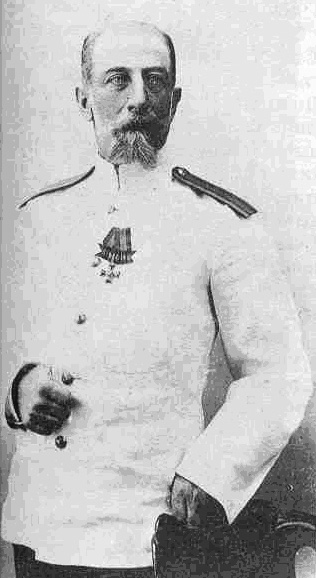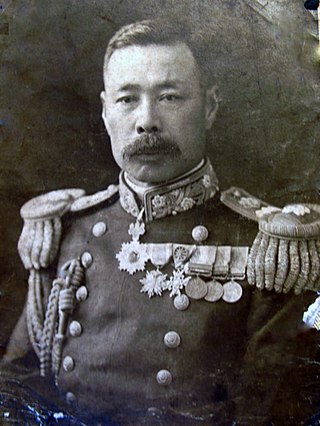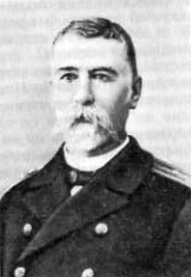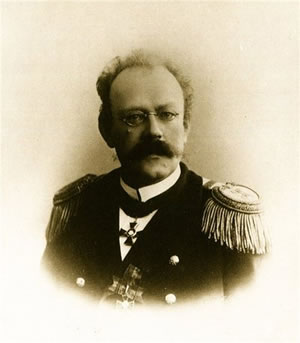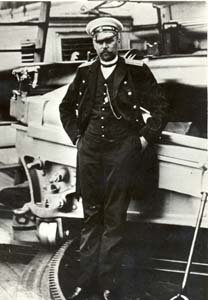Biography
On September 14, 1867, Lebedev enrolled in the Naval Cadet Corps and entered active service on April 17, 1868, with the rank of Garde de la Marine on April 17, 1871. [1] From 1872 to May 20, 1872, he was assigned to the 15th and 8th Naval Crews. With the rank of naval Lieutenant, Lebedev was dismissed from the navy on May 20. Around this time, he attempted to enter the Saint Petersburg State Institute of Technology as he earned a living from translations and tutoring but was expelled when he tried to pass the exam for a friend. Afterwards, he would work at the Novotorzhskaya Railway and was in charge of a blacksmith in Odessa. [2]
In 1875, he re-enlisted as a Garde de la Marine and was assigned to the 2nd Naval Crew in the Black Sea. On August 30, 1875, he was raised to aspirant and on May 24, 1878, he was the military commander of Odessa during the Russo-Turkish War. Lebedev then served aboard the Duma from June 22 to September 22, 1878, and on January 1 , 1880, he was promoted to naval lieutenant. He then graduated from the Naval Cadet Corps on November 13, 1880. He then became a naval mine officer of the Vitse-admiral Popov as well as commanded the Mackerel on February 20, 1882, and the Sultanka , he served as a junior mine officer on the Pamyat Merkuriya on September 23, 1883, and Novgorod on September 23, 1884, but was then transferred back to the Vitse-admiral Popov on September 23, 1884. On April 1, 1885, he served as the senior officer aboard the Bulgarian yacht Alexander the First but returned to Russian service on October 14, 1885. [2]
From January 18 to April 18, 1886, he served as a miner officer aboard the Zabiyaka but was then transferred to the Russian Siberian Flotilla on March 16, 1887, and commanded destroyer no. 76 on March 30, 1887. From November 8, 1887, to April 26, 1888, he commanded the 6th Naval Crew and began participating in classes specializing in naval mines on November 23, 1887. On April 23, 1888, he became the head of the detachment of destroyers as he commanded the Bobr on October 4, 1888. He was then assigned to work with apprentice miners and divers on October 28, 1888. From February 16, 1889, to October 1, 1890, he commanded the Yanchikhe . He was temporarily transferred back to the Black Sea Fleet on September 11, 1890, with no post but then returned to the Siberian Flotilla on November 24, 1890. He also commanded the Dzhim Gamil'ton L'yuis from August 17 to October 10, 1891, to enforce poaching laws as he served from the Bering Islands to Vladivostok and also served command of the Tunguz for only two days. Lebedev then became commander of the Aleut on November 10, 1891, and the Nargen at an unknown date. [2]
On January 1, 1893, he was promoted to Captain 2nd Rank and on June 30 of the same year, he was a member of the Provisional Naval Court. After returning to serve the Yanchikhe on July 31, 1893, he was transferred to the Korietz from September 8, 1893, to March 26, 1895. Lebedev then returned to the Zabiyaka on December 6, 1895, and on December 16, 1896, he was made the assistant adjutant commander of Vladivostok. On November 17, 1897, he commanded the Oprichnik and oversaw the construction of the Forel class destroyers in France. After being promoted to Captain 1st rank on January 1, 1901, he commanded the Oleg after its completion but then took command of the Dmitrii Donskoi in 1904 which he would take to participate in the Battle of Tsushima. [3] [4] [5] He was heavily wounded during the battle, dying from them on June 3, 1905, at Sasebo. [2]
A recollection of the events at the Dmitrii Donskoi by A. S. Novikov-Priboy documents the following:
The senior officer was on deck when one of the sailors flew up to him and, choking on words, reported:
- Your Excellency ... the commander asks you. Blokhin immediately climbed onto the bridge and, looking into the mangled and dilapidated cabin, was momentarily dumbfounded. The entire deck shone with fresh blood. Lieutenant Durnovo, leaning against the wall, sat motionless, bent over, as if thinking about something, but his skull was blown off with his cap and his brain was terribly pink. The steering quartermaster, Polyakov, curled up at the binnacle. Lieutenant Gears lay with his belly torn open. Above these dead men, gritting his teeth in pain, towered only Commander Lebedev, barely holding on to the handles of the steering wheel. He had a through wound in the thigh with a broken bone. In addition, his entire body was injured by small fragments. He stood on one foot and tried to keep the cruiser on course, unaware that the steering gear was broken and that the ship was steadily rolling to the right. Seeing the senior officer, he raised his eyebrows in surprise and said with blue lips: - I'm surrendering command ... - I will now order that you, Ivan Nikolaevich, be transferred to the dressing station.
- No need. I will stay here. Try to get into the shadow of the island as soon as possible. Don't give up the ship. Better break it... [6]






